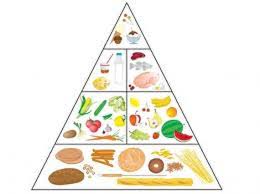Mealtimes are an important part of family life and will really be different from one culture to another. No matter what your background, I think all agree that healthy eating is essential in the well being of children. As you will be spending a lot of time with the children, you will need to be aware of their food and nutrition, what is ‘healthy’ and how much of it.
Mealtimes are also a great social point in many families. The BBQ is part of this of course.
In most homes, the host mum will shop for most of the food, in which case the food in the home should always be ‘safe’ and in line with parents philosophy (and budget) on food & drink. You can ask to help make a shopping list (good for your language skills!)
If you care for very young children, you may be asked to help with feeding too. If you have never done this before, ask mum to demonstrate how the child is fed, what special cups, plates, plastic cutlery etc is required for safe and enjoyable mealtimes. Serve all meals for a very small child in the highchair (straps) unless you are told otherwise.
There are questions to ask the family about their mealtime routine like;
Do the children have set meal times? If so, what are they?
Do the children have to sit at the table or can they eat in front of the TV?
Do they children have favourite foods? Serious dislikes?
If they do not like the food, how much should I insist they eat some?
Am I expected to eat with the children or with the adults or do we all eat together?
How much snacking is acceptable? What sort of snacks?
Who should cook and how much (most au pairs cook for the children most of the time but, if you can, it is nice if you can cook a few simple meals during the week for all family members) Who makes a meal-planner?
Do I eat with the family at weekends? Or should I cook my own or can I warm up a family meal if I have been out for the day and come home to eat later? (it will help the family if they know your plans, don’t keep them waiting or wasting food)
Are there any special dietary requirements or food allergies that need to be taken into consideration?
Balanced Diet
The Healthy Living Pyramid

The Healthy Living Pyramid (HLP) was developed to provide a simple guide to planning the types of foods we should eat and in what proportions. The pyramid represents food from the core food group s only. That is, it shows meat, fish, chicken, eggs, nuts, bread, cereals, vegetables, legumes, fruit, milk, etc. We all know though that at meal times, we don’t eat these core food groups alone, we combine several of them together. For example, we mix meat with vegetables to make a stew or casserole, eggs with milk and sugar to make custard or flour with oil, cheese, vegetables and meat to make a pizza. The Healthy Living Pyramid encourages variety, minimum fat, adequate fibre, limited salt and adequate water to be balanced with physical activity.
s only. That is, it shows meat, fish, chicken, eggs, nuts, bread, cereals, vegetables, legumes, fruit, milk, etc. We all know though that at meal times, we don’t eat these core food groups alone, we combine several of them together. For example, we mix meat with vegetables to make a stew or casserole, eggs with milk and sugar to make custard or flour with oil, cheese, vegetables and meat to make a pizza. The Healthy Living Pyramid encourages variety, minimum fat, adequate fibre, limited salt and adequate water to be balanced with physical activity.
Some children are fussy eaters. The best way to enjoy food is to make food preparation and meal times inclusive and fun.
Here are some suggestions
Get cooking. Give children simple tasks like mixing and stirring, it is a safe way to in volve even the smallest (toddlers are happy to stir and mix without any food, saves you cleaning up!)
volve even the smallest (toddlers are happy to stir and mix without any food, saves you cleaning up!)
Squeeze an orange with them; let them crack an egg etc.
Ask them to tell you they favourite food, look up the recipe and cook it together.
Make food look good, carrot and cucumbers are easy to cut into shapes (see page 15 for serious inspiration!)
Learn to disguise vegetables by using the blender.
Make fun foods together such as cookies, pizza and cake
Let them help by doing little jobs like setting the table and maybe ask them to decorate the table with some name cards, flowers and folded napkins too!
Most au pairs are also asked to prepare the children’s lunch boxes for school. Make sure you allow plenty of time to prepare and familiarise yourself with the items the children like to eat. Encourage fresh food and fruit/ vegetable snack with lunch as well as with all other meals!
vegetable snack with lunch as well as with all other meals!
If the host family asks you to help with some cooking, have a look at these simple recipes. Pasta dishes are usually the easiest and fastest to start with.
And how about drink?!
Most parents are not keen on too much ‘fizzy’ drink for their children. Some younger children have fruit juice diluted with water. Discuss the guidelines of daily intake and  special treats.
special treats.
Make sure the children are encouraged to drink lots of water during the day, especially when it is hot.
Bring water with you wherever you go!





